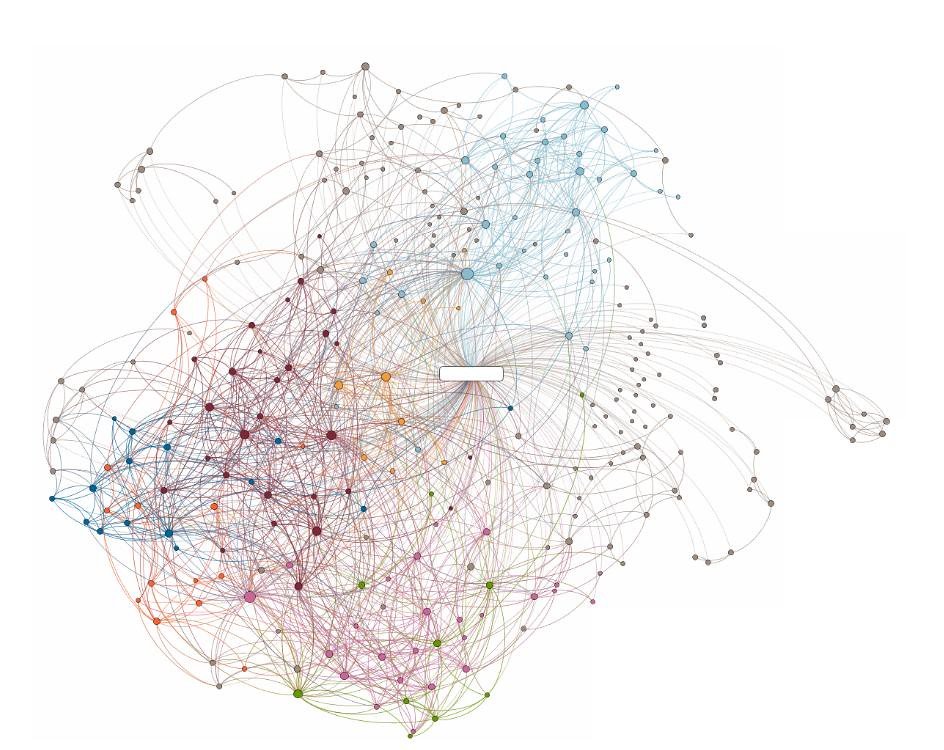The future of virtual exhibit halls
Sample exhibit hall offered by Chati, a virtual conferencing platform.
What’s the problem with virtual exhibit halls?
Every one of the dozens of exhibitors we have spoken with about pandemic-era virtual conferences had a bad experience in the virtual exhibit hall. Some said they talked with less than a handful of attendees each day. Some said they couldn’t properly demonstrate their products. Most felt the return wasn’t worth the investment.
But here’s the rub: Exhibit Halls often pay for a large fraction of the costs of a conference. So if exhibitors aren’t willing to purchase a booth at a virtual conference, the whole enterprise is at risk.
Exhibit halls fuel conferences with ideas, products, relationships and importantly, booth fees. (Image by Danny Chia.)
A potential breakthrough: Sophisticated matching
Even if virtual exhibit booths don’t get a lot of impromptu foot traffic, they can more than make up for it by filtering out the crowds to match exhibitors with attendees who actually want to talk with them. Let’s put it this way: If you were looking to meet a new romantic partner, would you rather walk into a bar full of strangers, or one where everyone there has already heard of you and wants to meet you?
Use Social Network Analysis to match exhibitors with attendees. In a prior blog post, we describe Social Network Analysis (SNA), a method for understanding a network of people and their relationships. If a virtual conferencing platform integrated SNA tools, it could match exhibitors with attendees who might be interested in learning more about their products. Many platforms already have a low-tech version of this—they match exhibitors with potential clients based on attendees’ profile interests. Information about a person’s professional relationships (found on LinkedIn, for example) could augment the information in their profiles, better filtering potential clients for exhibitors to contact.
Social networks describe the relationships (links) among people (nodes). (Image by Brewbooks.)
They could be used to match exhibitors with interested attendees.
Supercharge word of mouth. An SNA-based system could also help attendees make productive connections that don’t directly involve the exhibitor at all. We all know the value of talking with someone who has already purchased a particular product and can candidly share their personal experience. The platform could include in its profile of each person any types of products they’re looking for, as well as products they’ve used and are willing to talk about, and the system could identify productive pairings. Exhibitors should embrace this approach because they are galvanizing happy clients to be available as informal, low-pressure salespeople. Another nice side-effect of such product-based pairings is that they could create natural conversation-starters for attendees milling around a networking space. E.g., “Hi I’m Veronica and you don’t know me but I see you’ve used the SpatialChat platform. Would you mind telling me how it worked for you?”
Take a cue from the dating apps. In some dating apps, like Bumble, if two straight people are interesting in texting each other, they cannot move forward until the woman texts first. This helps to create a feeling of control and safety for women on the platform. Similarly, any virtual conferencing platform that matches exhibitors and attendees could inform both of the match, but allow only the attendee to initiate contact. Attendees may be more willing to be matched through SNA and profile analysis when they have control.
(Image by Ivan Radic.)
Everything’s better with a friend. Just as the SNA and attendee profile tools could be harnessed to match exhibitors to potential clients, they could also match attendees who might both be interested in talking with the same set of exhibitors. Isn’t it much more fun to peruse an exhibit hall with a companion? In the virtual space, talking in pairs with an exhibitor would likely be less awkward. It would also likely be easier to start and end the conversation. (“We’ve gotta keep moving. Thanks for your time!”) In the future, platforms could tell attendees who else might want to visit the same set of exhibitors, and that list could start with people they know well.
Sue Allen and Josh Gutwill are Co-Directors of the Clean Conferencing Institute. At the Institute, we’re working with virtual conferencing platform providers and social network analysts to make these kinds of ideas a reality. If you’d like to support us, please consider clicking on the Donate button at the top of the page.



